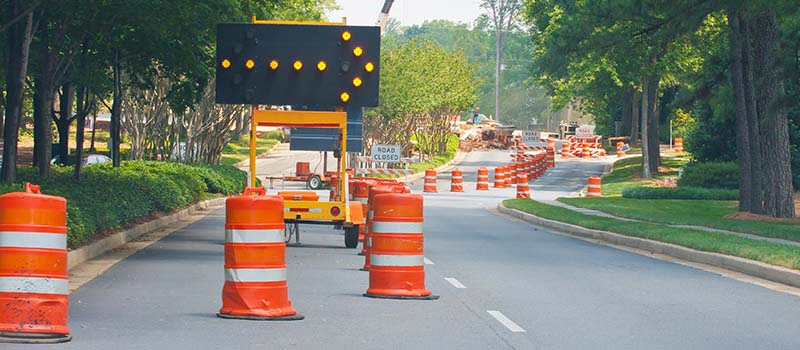Motorcycle Safety Tips During Road Construction Season
Motorcycle Safety Tips During Road Construction Season

Motorcycle Safety Tips During Road Construction Season
- Watch for uneven pavement, as well as rough or grooved surfaces. Before repaving begins, surfaces need to be prepped properly, and this can create dangerous riding conditions. Be careful and reduce your speed if you encounter these pavement conditions, as they can cause your bike to tilt your bike unexpectedly or pull to one side suddenly.
- Pay attention to cones and barrels. Although they are commonly used to route traffic in construction zones, cones and barrels are often hit by cars or trucks accidentally, causing them to tip over or be pushed into your lane. Watch carefully for these hazards, which can be dangerous if you accidently hit them.
- Be aware of sudden traffic stops. When traffic congestion increases, the likelihood that you’ll encounter traffic that has stopped suddenly increases as well. You’ll want to stay aware, in order to avoid having to brake suddenly and potentially be involved in an accident.
- Use caution on new pavement that is unmarked. When construction crews are repaving, painting lines on lanes is usually the last step in the process. If you’re driving on unmarked pavement, watch carefully for unexpected lane shifts – and be sure to watch the drivers around you, as they may be uncertain about lane markers and other important markings as well.
- Watch for slippery conditions when you see fresh paint. Not surprisingly, newly painted road markings can make the road slippery, especially if reflective beads have been added to the paint. Excess reflective beads can reduce friction, making it harder for your wheels to grip the road.
- Increase your following distance. When traffic gets heavy in construction zones, keep more space between your bike and any vehicles in front of you. In normal conditions, the “two-second rule” is considered adequate for following distance, but you may want to increase your distance in order to give you more time to react to sudden obstacles and hazards.
- Be careful when changing lanes, and use the lane that’s safe for you. Try to avoid driving in a lane with grooved pavement, if possible. If you need to change lanes (and it’s safe to do so), make sure to move from grooved pavement to new pavement by rolling over it at a sharp angle. This will help you avoid getting caught on an edge trap, an uneven place on the road that can “trap” your front wheel on its edge, which can potentially tip your bike over or cause a dangerous accident.
- Watch out for other drivers. As you would with any driving situation, you want to keep an eye on the vehicles around you. Distracted drivers in construction zones can engage in dangerous driving behaviors, and you’ll want to be sure you know how to react quickly to their movements to keep yourself safe.
Even the safest, most vigilant drivers can’t avoid every accident, and you’ll want to be sure that your bike is protected, no matter what situation you encounter on the highway. If you’re uncertain whether you have enough coverage to protect your motorcycle and all its accessories, reach out to your local agent. They’ll help assess your current insurance coverage, and will help you to get the protection you need for your specific bike and your driving needs.
